Recollections of the Past 30 years pursuing Coelacanths
Jerome Hamlin, creator dinofish.com
During Sopac II, I heard from National Geographic by email. They were producing a film on the coelacanth using a South African production team, and a group of professional French diver-photographers, diving at Sodwana, South Africa. Would I agree to possibly represent the film in my area when it was aired? I said yes, and they said they would send me the nondisclosure agreement(!) Fotunately, we were in New Guinea at the time with impaired email possibilities and I never received the agreement. I would later realize this was a "catch and kill," simply designed to silence me. And for good reason. Not only did the production company take my coinage "Dinofish" for the title, but the film (which contains a good historical reenactment of the "first" coelacanth) implies that the divers are making first contact with a group of coelacanths that had been exhaustively studied for the previous ten years. Some had even been given names. The footage, however, was very good.
Meanwhile, on my limited budget, I geared up to again pursue the actual search for new coelacanths. We needed to add a way of seeing deep underwater to our basic kit of I.D. photos and the small plastic model we had brought on Sopac II. I looked at small ROV's, but the ones we could actually bring along did not have the depth range, and would be vulnerable to currents. The larger units would be too cumbersome for transport and operation from bannana boats. I found a device called a drop camera. This is simply a camera in a waterproof housing on a tether that can be lowered from a boat. The one I picked was the Seawiewer from a company in Florida, U.S.A. The camera is built into a short torpedo shaped tube with a rear fin that keeps it facing into the current. I got it with 1000 ft of tether cable on a spool and a control case which included a monitor. The video can be recorded to a memory card in the control case, and an added Garmin GPS unit supplied bathymetric maps which can be marked with exact locations.
In 2012, Diana and I flew with this gear, plus land cameras from New York to Port Morseby, Papua New Guinea, then up over the highland ranges and down to Wewak on the north coast. Somehow, we dealt with the customs issues, and different pieces arriving in different places at different times. In Wewak, we met up with Alois Mateus again, who helped us provision. From Wewak, we moved our gear our supplies, and ourselves over to Yuo Island about 40 minutes away by bannna boat. There we stayed with a local pastor, Robert and his family who ran a small resort lodge. At Yuo we ran our first tests of the Seaviewer, as I familiarized myself with its operation.

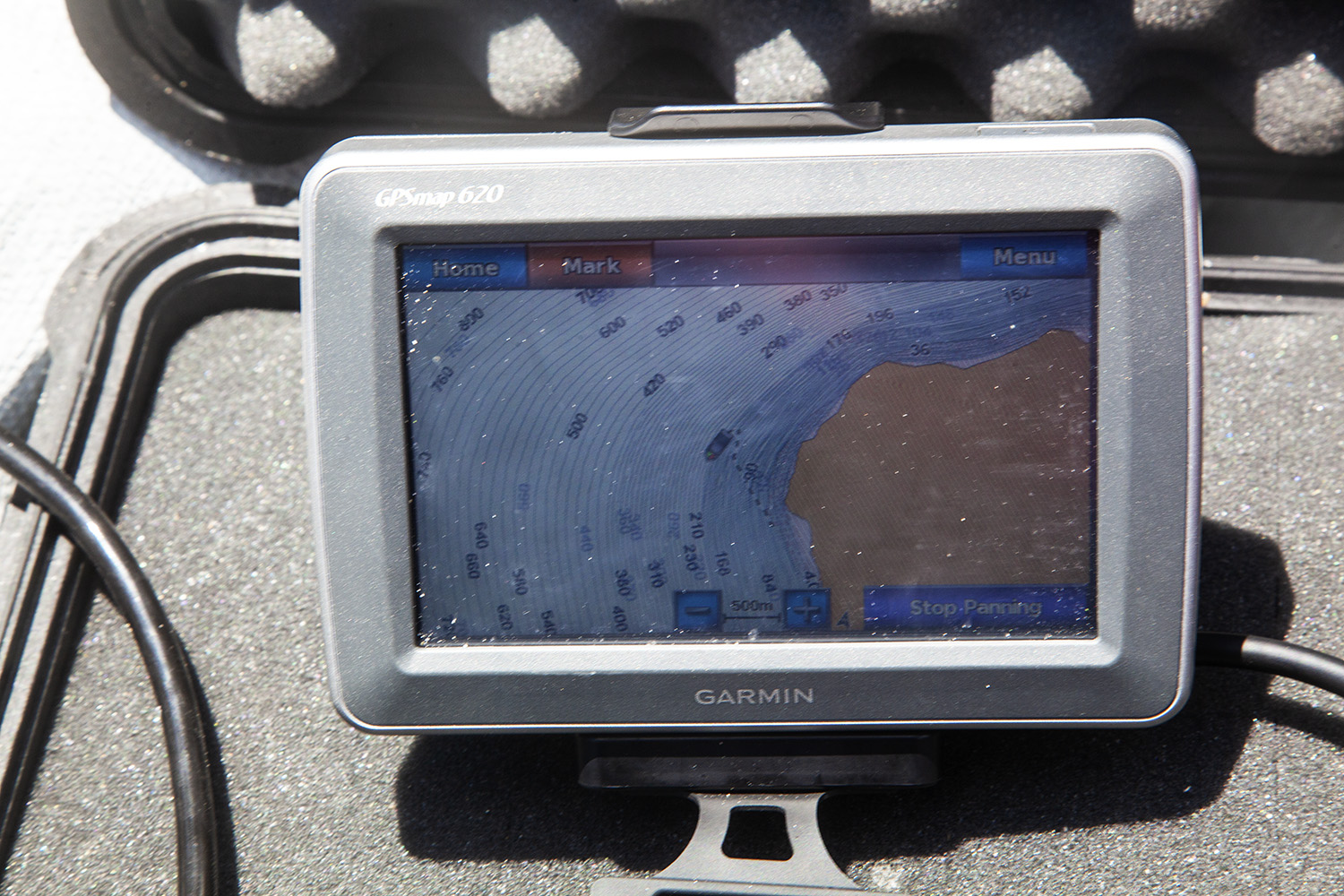
A Garmin GPS with bathymetric maps gave exact positions.
We met Mark Palm and his family who were on break at the island. Mark, an American, flew for Samaritan Air service, operating a small float plane way up the Sepik river, bringing snake bite, and accident victims along with medical patients back to the hospital in Wewak. He was introducing surfboarding to local youths, so we were soon immersed in local goings on. Meanwhile, Robert made his bannana boat and family members available to our service, and we began visits to neighboring islands with our I.D. photos and Seaviewer drop camera.
At Kairiru, I addressed a meeting of the islanders. All were interested, but drew blanks when shown the photos. Eventually one skeptic changed his mind, and then others agreed when there was a possibility of gas money for one of their boats. We went out with the escort boat and dropped our camera with one of Robert's sons managing the tether spool. No sign of coelacanths or coelacanth terrain. One thing I would often notice: once beyond the bottom of the reefs, the seafloor became a desert of muck. Life was scarce down there. Wormlike creature sticking up occassionally. Very few fish. The great hype of the oceans is mainly centered on the dense diversity of life in the first few hundred feet from the surface, on, in, and around coral reefs.
A day later we went round the end of Kairiru to Victoria Bay, an area enclosed by a fork in the island. A fisherman calimed he had caught our fish near a sunken wreck in the middle of the bay. He fished there nearly every day of his life. He met us in his canoe. We dropped the camera and for the first time he saw the wreck that was in his backyard. A Japanese transport hiding there had been sunk by an American submarine during WWII. You could see the hole made by the torpedo before it exploded. The fisherman was quite amazed. But no trace of coelacanths.
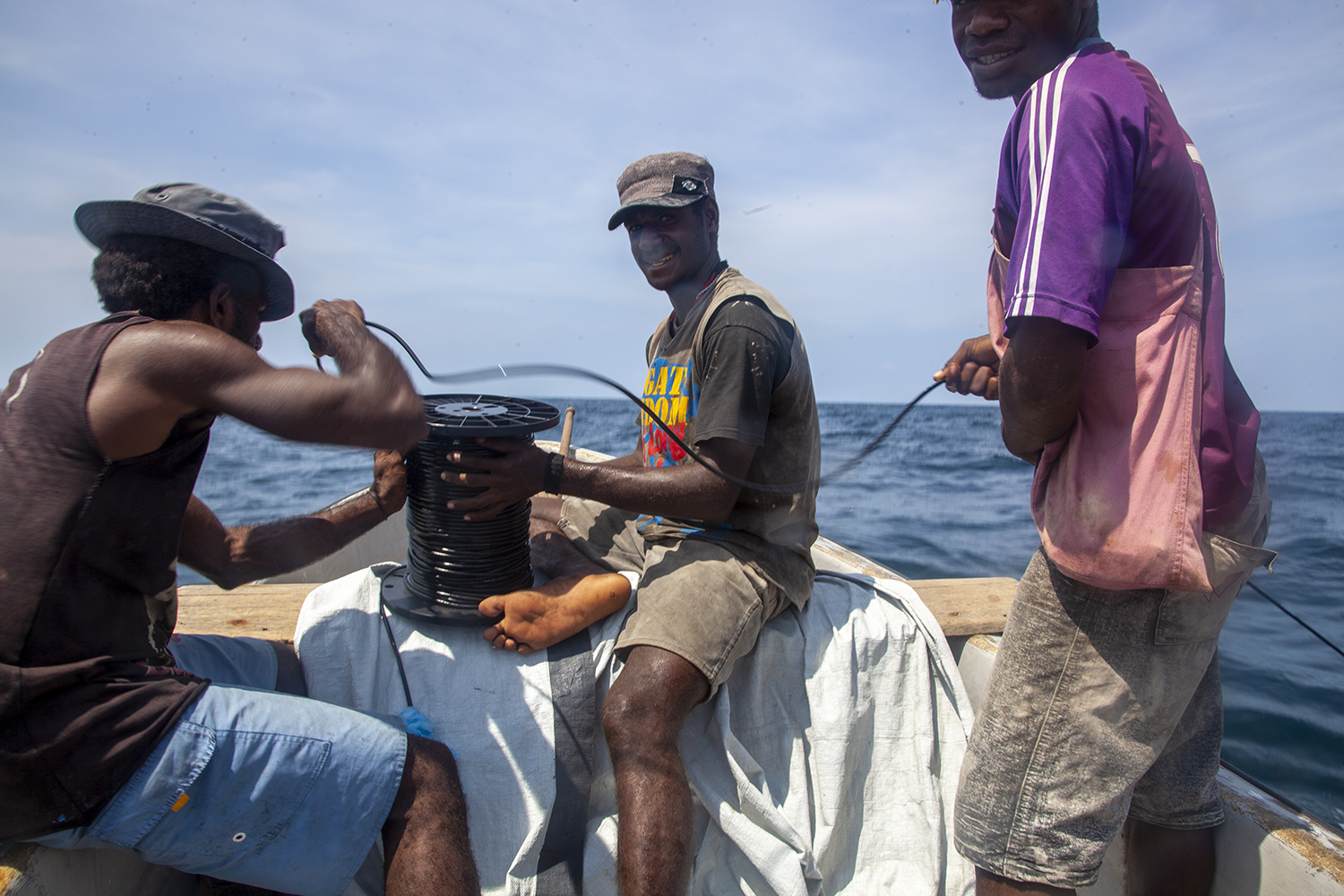
Managing the spool with 1000ft of tether was a job!
We explored the vicinity of several more islands. Each called for a visit to the island's village first to make contact with the headman and receive permission to explore their waters. This usually did not involve kastom payments, but the visits were essential. The camera was not easy to operate at depth. It really never went straight down. If there was current it angled off with the current. If you had the boat moving under power to cover ground it would drag off the stern at an angle. There was a lot of going in and out of neutral gear to try to get it positioned just off the bottom. Bringing it back up was a quite a job for the men winding the spool.
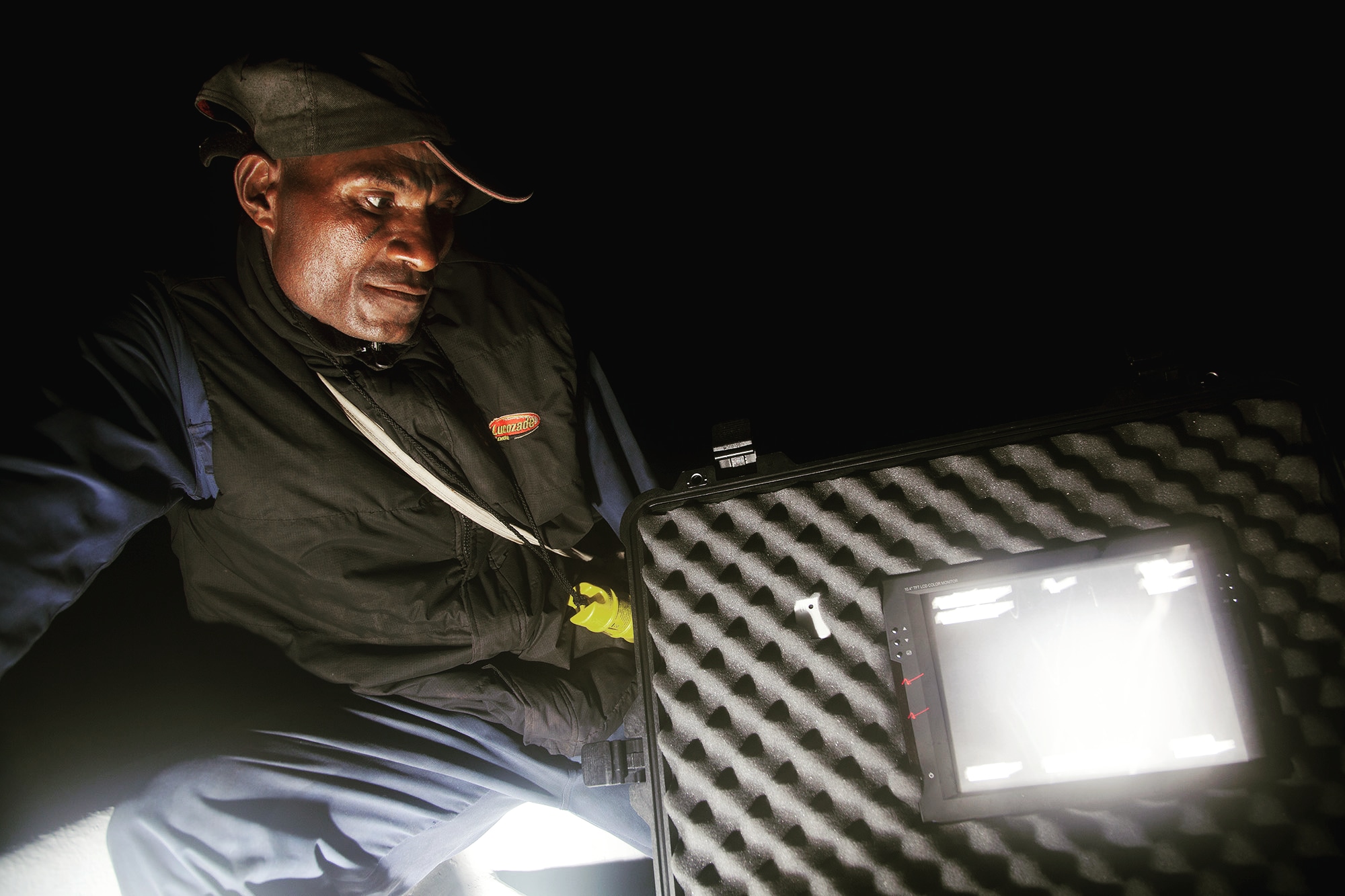
An assistant watches the screen of the Seaviewer Camera. A ring of LEDs allowed the system to be used at night.
We were ready to visit Vokeo island which involved a sea crossing of several hours. Alois told Diana to insist on having two outboards in case one broke down. Several bannana boats disappear every year. Some swamp with loss of life. Others drift for days or weeks with the desperate passengers living off rain water and whatever sealife they can snag. She did insist. With Robert driving the boat, one engine died about half an hour out. We made it to shore on an island and he was able to fix it.

We set off again. The sea was choppy and the boat had a crack in its fiberglass hull. I watched that crack flexing for hours with visons of the boat coming apart, eventually calling on Robert to slow down. We made it to Vokeo, a very special island, big on tradition, with a beautiful village of thatched houses set on a bed of white coral gravel which formed the main thouroughfare. The councellor or headman took a liking to Diana and made us very welcome. A house was put at our disposal for the night. Operating the Seaviewer off of Vokeo, I suddenly lost the signal. The image vanished. Pulling it up we saw that it had flooded with seawater. I opened it but the circuits were shot. The camera was kaput.
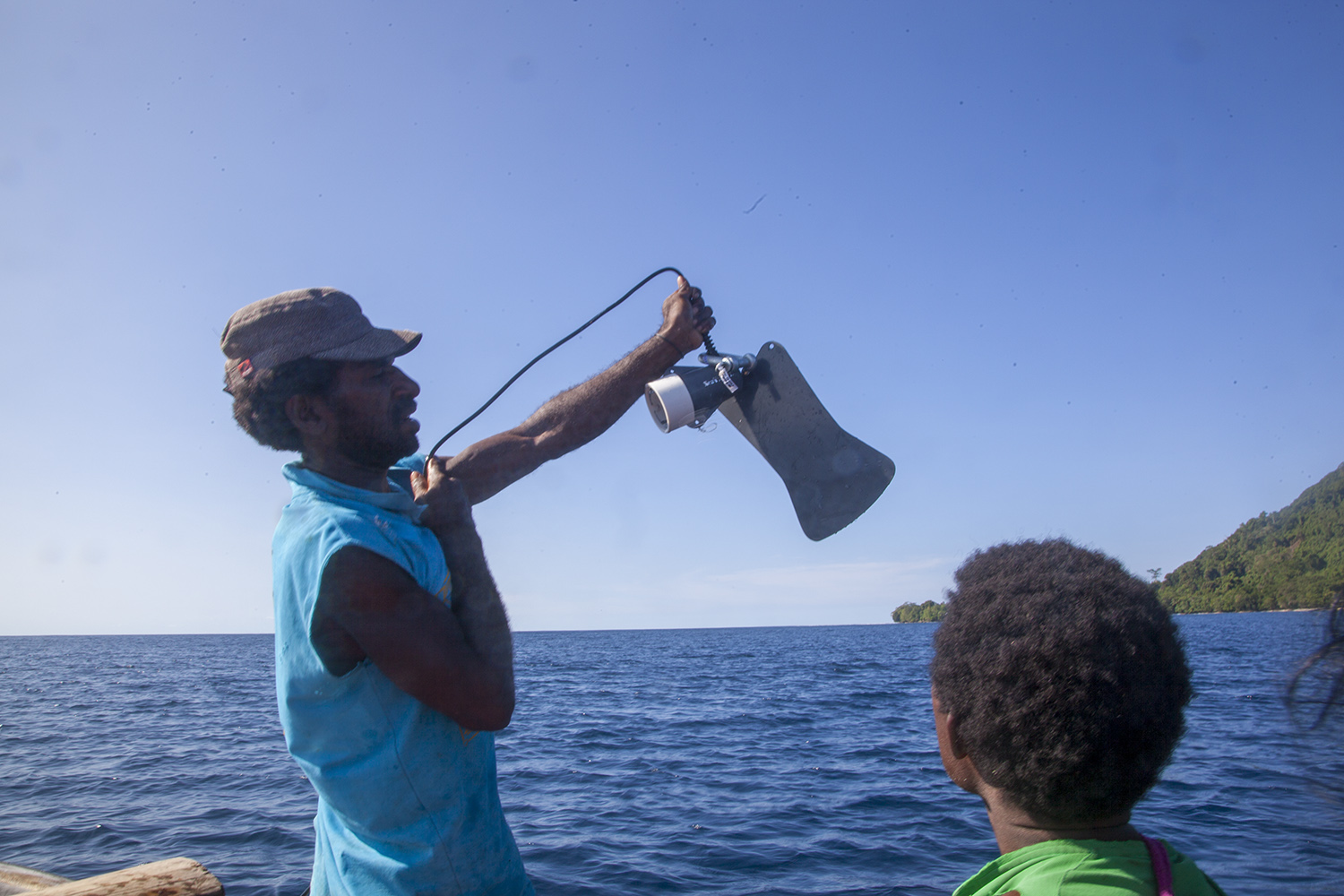

The Headman of Vokeo studies a coelacanth model.

Diana at the headwaters of the Sepik
Using my sat phone, I was able to talk to Florida, U.S.A., and arrange a replacement camera head to be sent out to New Guinea, once they received mine. We made these arrangements, and during the delay, did another excursion from Wewak on the Sepik, way up river. Then we flew to Madang, also on the north coast, and with the new camera head, arranged a bannana boat to the volcanic island of Karkar.
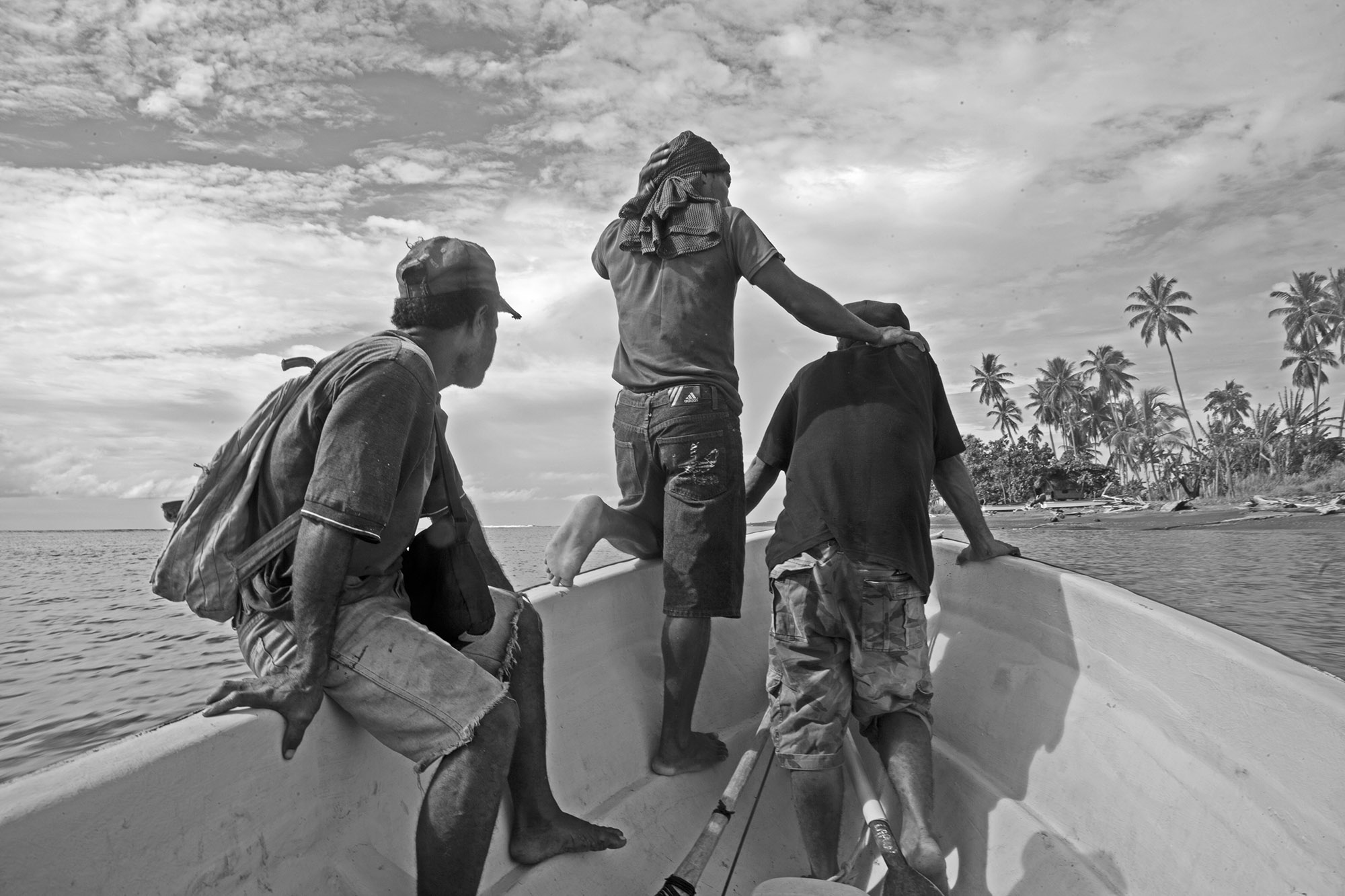
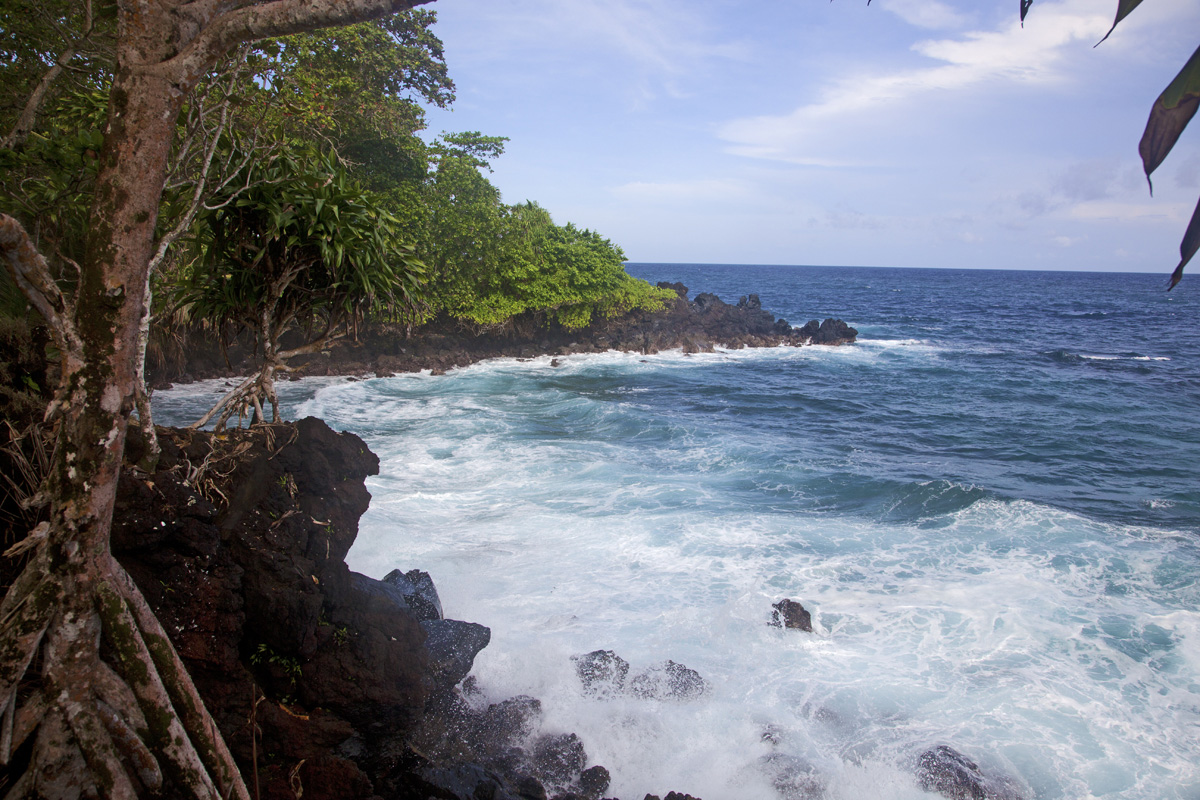
The spectacular coast of KarKar
Karkar reminded me of Skull Island from the King Kong sagas. We found a place to stay, not far from the sea, with all our gear. It rained torrents almost every day. It was difficult to arrange a boat for the drop camera, but we managed, always depending on the weather. A broken down mini van hobbled us to the wharf for the outings. Once we encountered a fisherman in his canoe smoking cigarettes. He gave a very convincing account of his father catching a coelacanth when he was young.
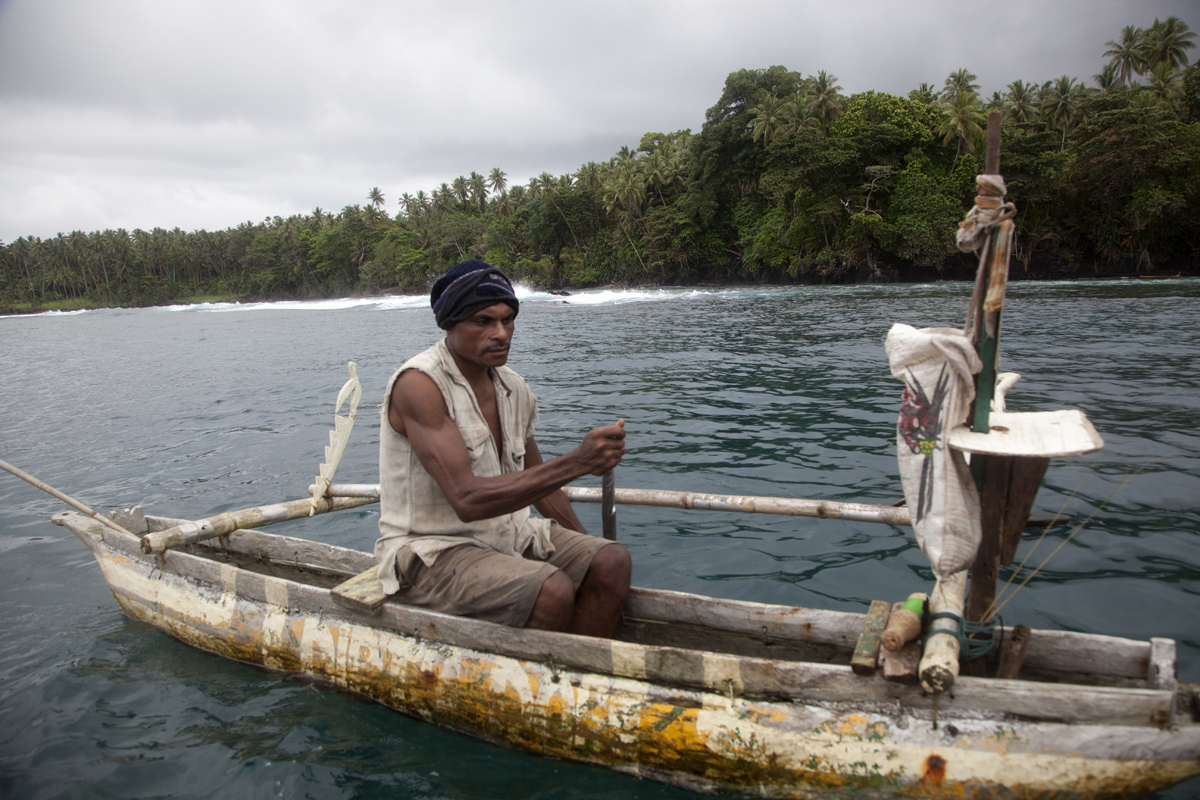
Another time, we had a worse case scenario. The camera snagged on the bottom, caught fast on coral debris a hundred feet down. In fear of losing it again, we hovered over the area with the boat operater working the snag. The camera was running the whole time. When he finally got it free an hour later, we were so relieved we gave him our life jackets, a real premium in this part of the world. However, after that gesture he failed to appear for the next excursion!
Bad weather at Karkar took a toll on our psyches and equipment. Mold even formed on my Panama hat and fused my leather wallet together, which could be a problem back at the Wewak ATM! We were done. From Madang we made the hop by air to Alotau on the eastern tip of Papua New Guinea, and from Alatau out to the Trobriand Islands- but without the drop cam gear. The Trobriands were fascinating. Easter week and a yam festival were in full swing. Crossing the island by vehicle we met a free diver named Emanuel who claimed he had caught coelacanths. We stayed at his place and went out with him in his boat. But the fish he thought were coelacanths, I later identified as juvenile mangrove jacks.

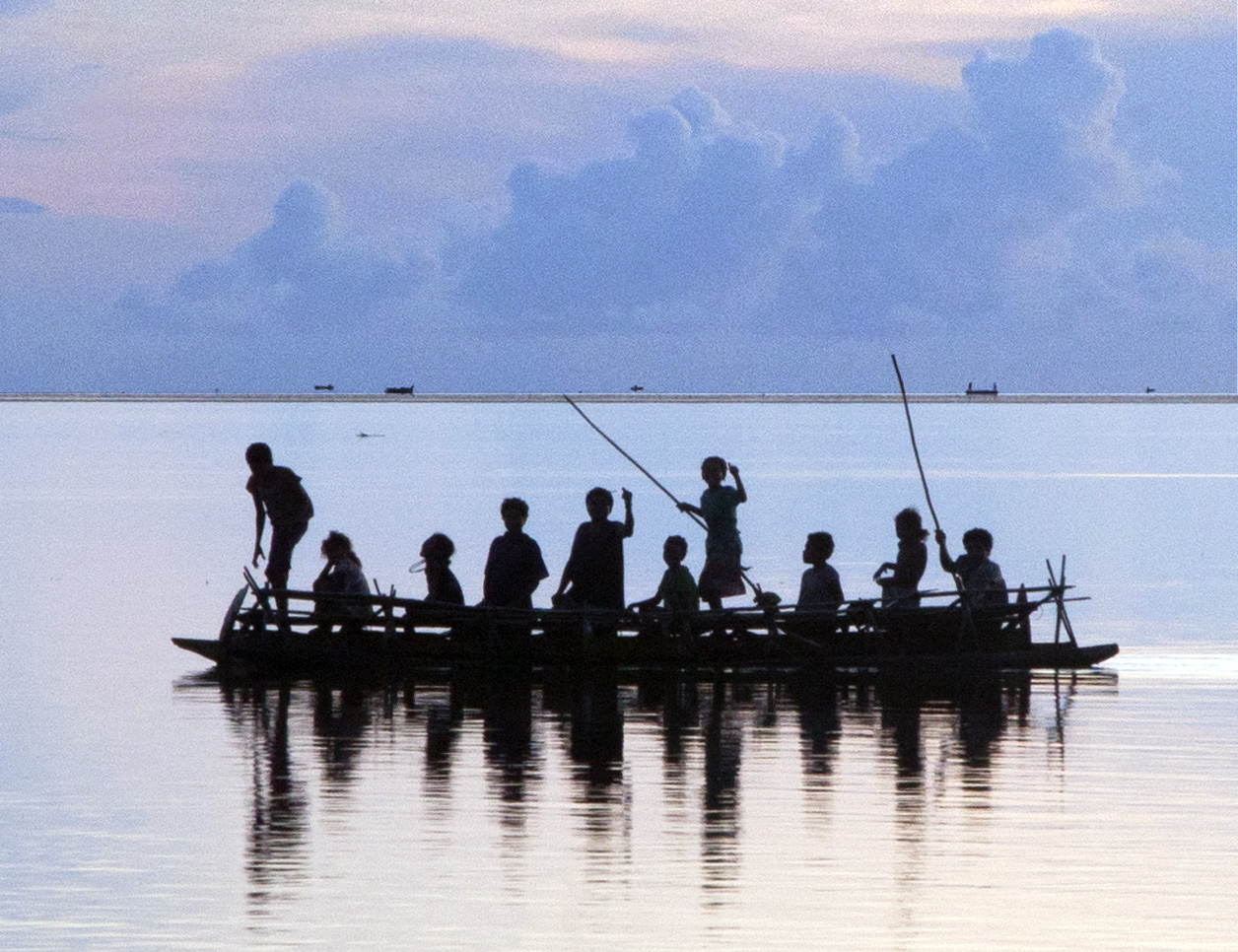
We returned to Alotau, then a flight to Port Morseby, and from there, once again by jet the few hours to Henderson Field, Guadalcanal in the Solomon Islands.
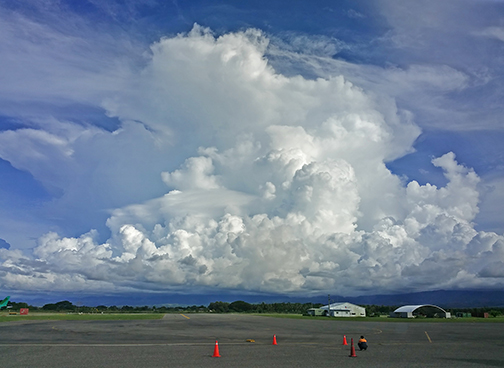
This time in the Solomons, we decided to visit the remote Arnavon Islands, and we had the still operational drop cam. The Arnavons required one flight by Twin Otter, to northern Santa Isabel Island, then a series of bannana boat trips, with a overnight in a remote settlement. The wild Arnavons are a conservation area set up originally by the Nature Conservancy, but now run by local Solomon Islanders. The guest book showed a number of international visitors. Once there, the operators helped us with one or two drop cam operations, but the submarine terrain was not really coelacanth country. However, here we saw the spectacular beaches, ancient ruins, the turtle nesting program, and most curious, the megapod bird and its enormous eggs, a great delicacy in the South Pacific.
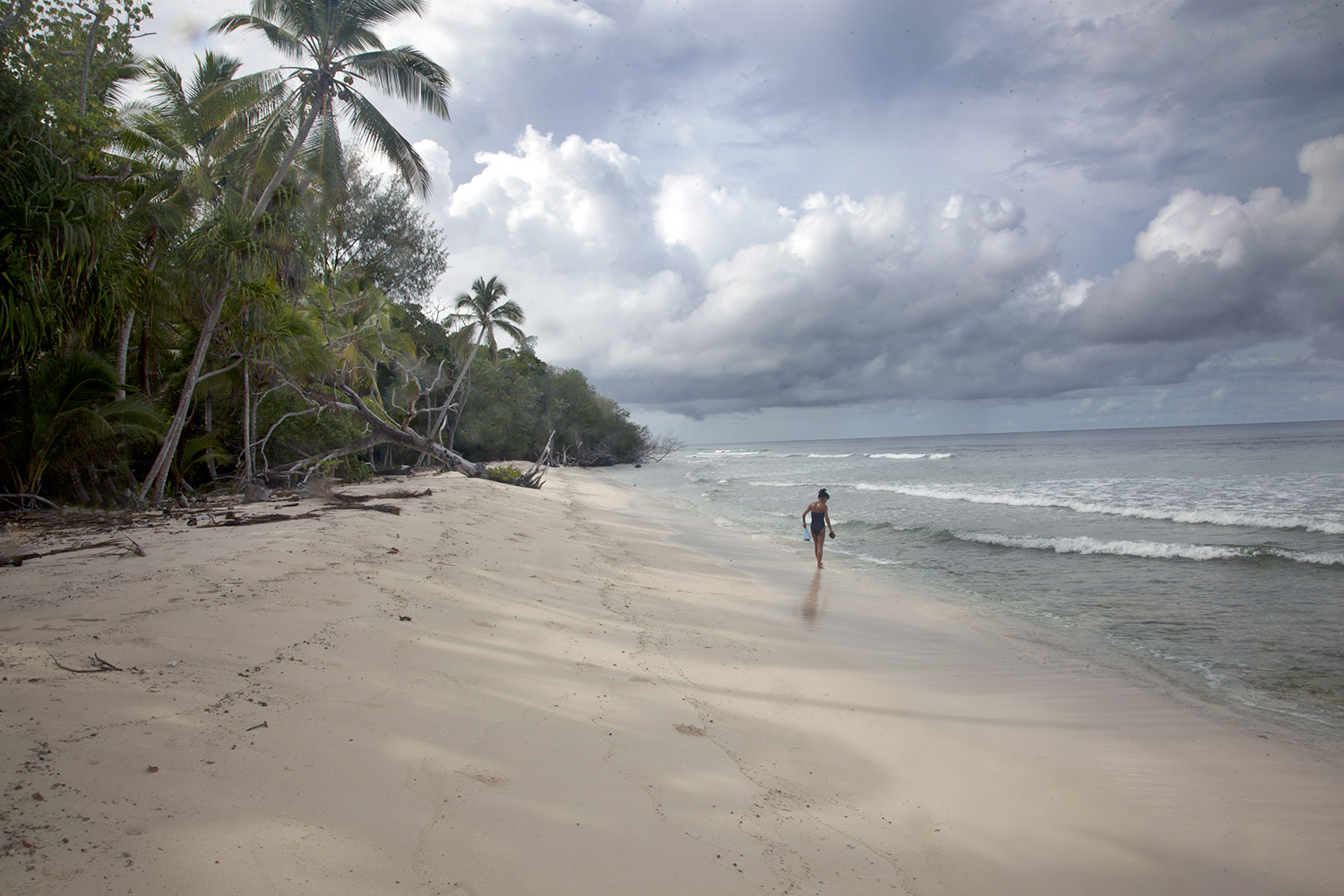
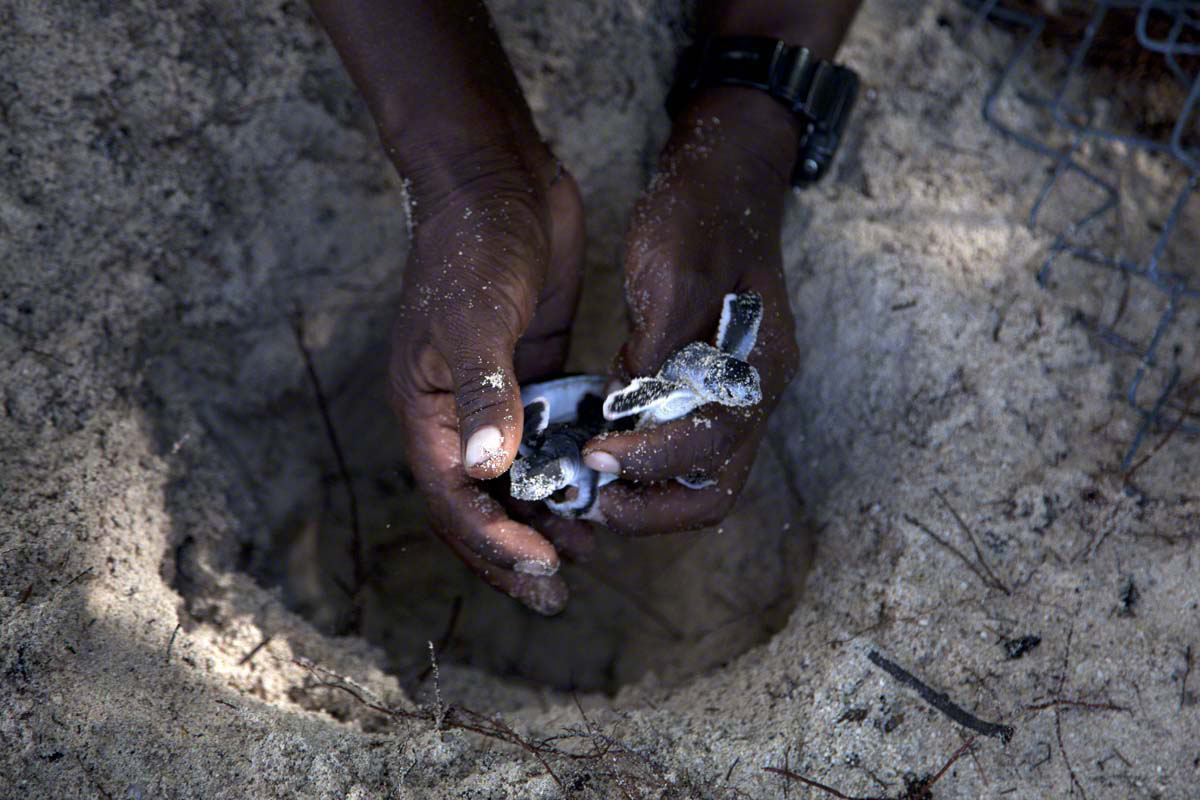
Turtle hatchlings in protected nests

The Megapod

Megapod fried egg!
I couldn't eat the egg, but I decided that if we came back on a SoPac IV, we would expand our search into whole new areas of interest.
Video Feature: A promising fisherman interview on the water. Exit video with back arrow.
